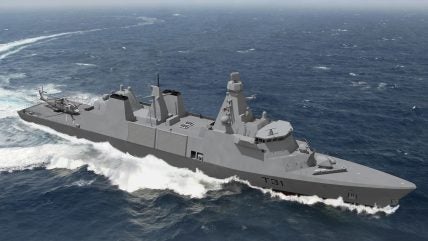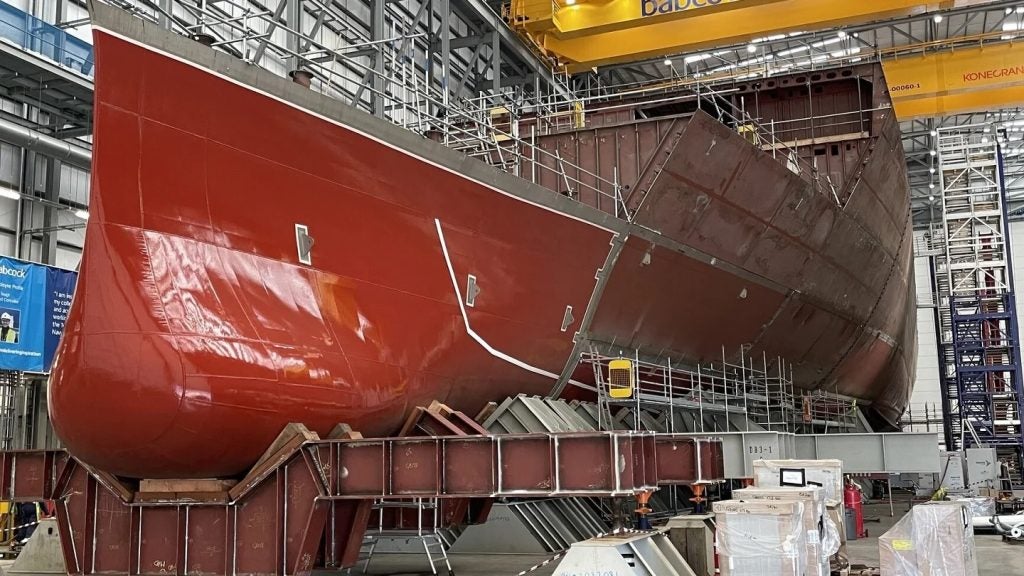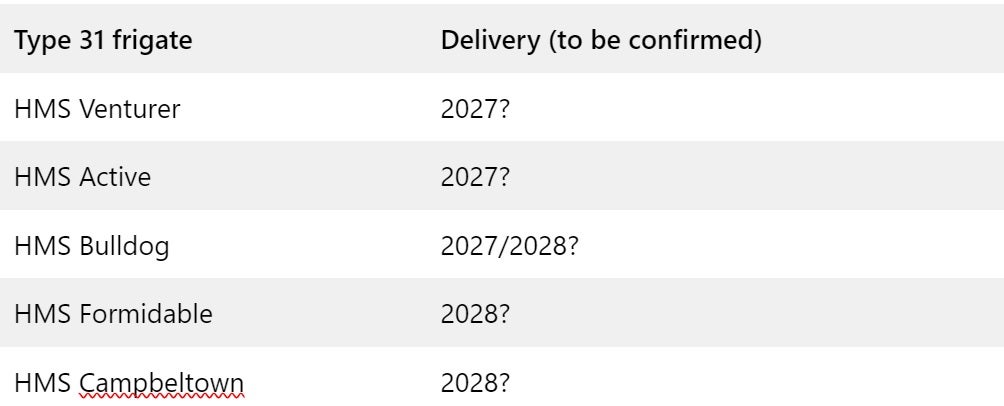
The integration the Mk 41 vertical launch systems (VLS) into the UK’s upcoming Type 31 frigates could come in the form of capability insertion periods carried out after the vessel has been delivered to the Royal Navy, rather than during the build process.
The decision in May 2023 that the UK’s Type 31 frigates, originally envisaged as light patrol platforms, were to be fitted with the Lockheed Martin Mk 41 VLS system offered the prospect of a significant capability increase through a wider range of anti-ship and anti-air missiles.
At the time of the announcement by UK First Sea Lord Admiral Ben Key, construction was already well underway on the first-in-class HMS Venturer, with the overall design finalised.
Speaking with Naval Technology at the time, a Royal Navy spokesperson said that the service had initiated an assessment phase with the US Navy and industry to “explore options and costs associated” with fitting the Mk 41 into the Type 31 frigates.

However, during a media briefing with Babcock at the company’s Royal Navy Dockyard in HMNB Devonport on 8 February, 2024, officials told Naval Technology that it was imperative the vessels were delivered on time to the Royal Navy.
The integration of the Mk 41 VLS into the Type 31 frigates could be done during “capability insertion periods” after the vessels had been delivered, officials said, adding that it was key that any decision should not “disrupt the delivery”.
Potentially, earlier vessels could be completed as originally designed, with future ships in class incorporating the Mk 41 VLS during the construction phase. The earlier designed vessels would then have the Mk 41 fitted at a later date during a capability upgrade phase undertaken around halfway through the initial service life, usually around 10-12 years.
This could create a two-variant class of Type 31 frigate, with older models initially delivered on a ‘fitted for but not with’ the Mk 41. This is relatively common among naval warship programmes, with variants created to fulfill specific roles, such as anti-ship warfare, as required.
Timeline for the Type 31 frigates
According to the UK’s shipbuilding programme, five Type 31 Inspiration-class general-purpose frigates will be introduced into Royal Navy service from 2027, with Babcock apparently tasked to complete the handover of the fifth and final vessel the following year. Following each handover, the Royal Navy will begin a test and trials programme to ensure the vessel is ready for service, with HMS Venturer’s own due to be around four years long.

Delivering its H1 2023 results report in November last year, Babcock outlined the progress being made on the Type 31 frigate programme, stating at the time the first-in-class HMS Venturer was “progressing through construction” with the ship’s superstructure “taking shape”.
In addition, the main engines, gear boxes, and diesel generators had been installed with supporting systems being fitted around them. The next major milestone of HMS Venturer will be float-off, expected in the first half of 2024.
Manufacture of the second ship in class, HMS Active, has seen the first double bottom block completed in the build cradle, following the keel laying earlier in 2023.
Light frigate goes full (surface) spectrum
Originally designed as a light patrol frigate, the Type 31 was envisaged to feature minimal surface-to-surface attack options, primarily based around the single Mk110 57mm main gun from BAE Systems and two Mk4 40mm secondary weapon systems from Saab Bofors. Anti-air capability was to be provided by the SeaCeptor ‘mushroom farm’, amidships.
The deliberately light kinetic surface attack options, and reuse of existing equipment ported over from the outgoing Type 23 frigates, was determined as the best way to keep the costs down and ensure each of the five frigates was able to be delivered at a cost of £250m (around $315m) per hull.
However, in November 2022 it was announced that the UK would acquire 11 ship sets of the Naval Strike Missile (NSM) from Kongsberg, offering a canister-launched anti-ship missile that would be equipped to the in-service Type 23 and Type 45 vessels. The NSM will effectively replace the outgoing and obsolete Harpoon Block 1C.
In reality, little in the way of equipment will come over from the Type 23 frigates, with the Type 31s having a different combat management system, main and secondary guns, radar, and, potentially, missile systems, depending on the outcome of the Mk 41 assessment phase.








